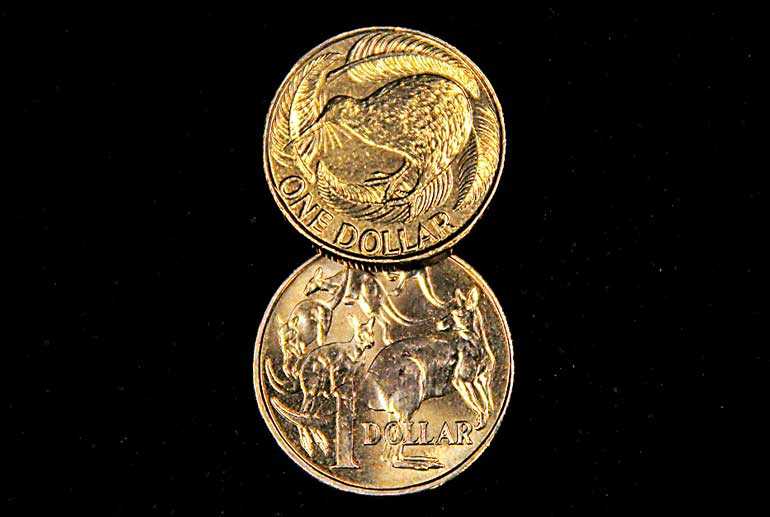Sunday Nov 09, 2025
Sunday Nov 09, 2025
Thursday, 6 February 2020 01:40 - - {{hitsCtrl.values.hits}}

New Zealand and Australia one dollar coins are seen in a picture illustration
SYDNEY (Reuters): Analysts have downgraded forecasts for the Australian and New Zealand dollars in the short term as natural disasters and the coronavirus drag on domestic growth, but they remain surprisingly upbeat on a one-year horizon.
Analysts polled by Reuters see the Aussie at $ 0.6700 AUD=D3 in one month, down from $ 0.6900 in the January poll and near its current level of $ 0.6735.
Yet the majority believed the downturn would be temporary and forecast the Aussie at $ 0.6800 in six months and $ 0.7000 in one year.
The near-term downgrade reflects a tough few weeks for the currency as raging bushfires in Australia and the epidemic in China took a heavy toll on tourism and commodity prices.
As a result the Aussie, has fallen 4% so far this year and came within a whisker of its decade low at $ 0.6670.
Richard Franulovich, head of FX strategy at Westpac, noted steep losses in prices for Australia’s commodity exports had lowered his estimate for the Aussie’s fair value to just $ 0.6515.
It had got a respite this week when the Reserve Bank of Australia (RBA) held interest rates at 0.75% and lifted the bar for further cuts, saying a period of stability would be better.
“The Aussie bounce could extend slightly further toward $ 0.6750, however, we doubt that we will see much further strength near term,” said Franulovich.
“Indeed, much above $ 0.6775/0.6800, our fair value methodology suggests the A$ would be expensive given the sharp drop in commodity prices seen so far this year.”
The New Zealand dollar NZD=D3 was seen at $ 0.6500 in one month’s time, down from $ 0.6600 previously, again reflecting the global impact of the virus.
Further out, the kiwi was seen languishing at $ 0.6500 in three months and $ 0.6529 in six, before ticking up to $ 0.6700 in one year.
“The Kiwi should drop into the low $ 0.60s near term, as the impacts of the coronavirus comes through,” said Jarrod Kerr, chief economist at Kiwibank.
“But by the end of the year, we expect the world to have returned to the path set at the end of 2019. Risk assets should rally back and, with a rise in risk appetite, the Kiwi surges higher.”
He saw the currency reaching $ 0.6700 by year, and $ 0.6900 by late 2021.